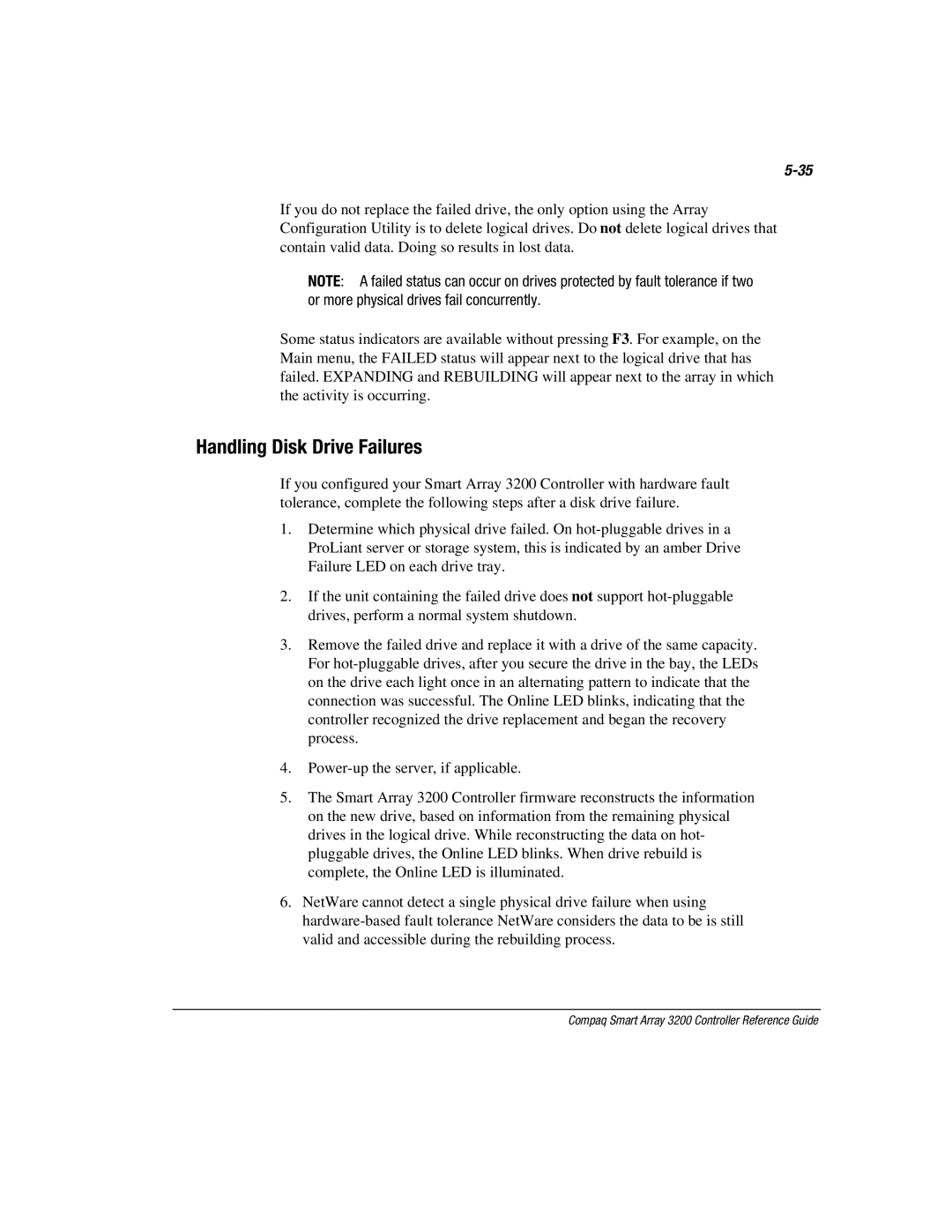If you do not replace the failed drive, the only option using the Array Configuration Utility is to delete logical drives. Do not delete logical drives that contain valid data. Doing so results in lost data.
NOTE: A failed status can occur on drives protected by fault tolerance if two or more physical drives fail concurrently.
Some status indicators are available without pressing F3. For example, on the Main menu, the FAILED status will appear next to the logical drive that has failed. EXPANDING and REBUILDING will appear next to the array in which the activity is occurring.
Handling Disk Drive Failures
If you configured your Smart Array 3200 Controller with hardware fault tolerance, complete the following steps after a disk drive failure.
1.Determine which physical drive failed. On
2.If the unit containing the failed drive does not support
3.Remove the failed drive and replace it with a drive of the same capacity. For
4.
5.The Smart Array 3200 Controller firmware reconstructs the information on the new drive, based on information from the remaining physical drives in the logical drive. While reconstructing the data on hot- pluggable drives, the Online LED blinks. When drive rebuild is complete, the Online LED is illuminated.
6.NetWare cannot detect a single physical drive failure when using
